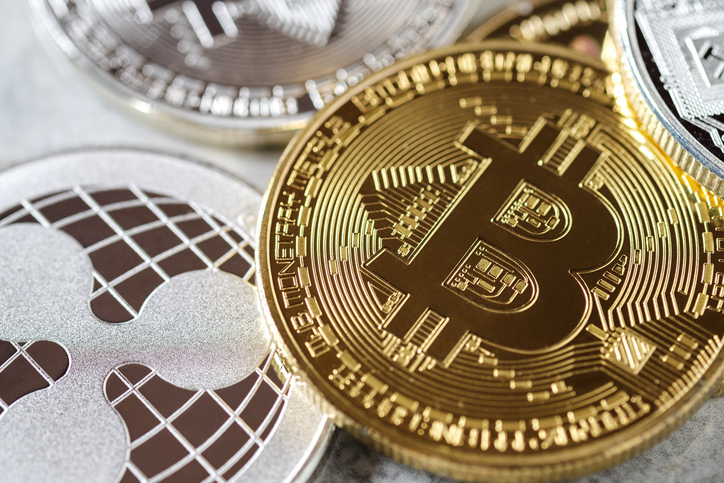Bitcoin’s AI Revolution: How Artificial Intelligence Is Rewriting Crypto Market Strategy
Artificial intelligence is no longer just influencing the digital finance space—it’s actively reshaping the very foundation of how cryptocurrency markets are analyzed, predicted, and navigated.
From high-frequency autonomous trading bots to neural networks parsing blockchain activity in real time, AI has entered its most influential era in crypto strategy. And Bitcoin—the flagship cryptocurrency defined by volatility and speculation—is at the center of it all.
From Models to Machines: AI’s Expanding Grip on Bitcoin Forecasting
Traditional financial models struggle to anticipate Bitcoin’s wild swings, which are influenced as much by macroeconomics as by social sentiment and market psychology. Enter deep learning.
Advanced neural networks, particularly Long Short-Term Memory (LSTM) models, are now widely used in Bitcoin forecasting. These time-series models excel at understanding data dependencies across days or weeks—making them ideal for a volatile asset like BTC.
A 2024 study in Forecasting introduced a hybrid deep learning model, merging LSTM with attention layers and gradient-sensitive optimization. It achieved a 99.84% accuracy rate in backtesting, outperforming classic models like ARIMA and even earlier neural architectures.
“Deep learning has made Bitcoin price analysis not just more accurate, but meaningfully adaptive,” says Dr. Rohan Sen, a machine learning researcher at MIT’s AI Lab. “These systems don’t just react—they learn patterns embedded in chaos.”
Decoding the Market Mood: NLP Meets Crypto
Natural Language Processing (NLP) has found a potent use case in crypto sentiment analysis. Twitter, Reddit, and Telegram are hotbeds of investor emotion—and real-time analysis of this chatter helps models correlate public mood with price fluctuations.
A 2023 arXiv paper combined BERT-based sentiment analysis with a GRU price forecast model, showing a mean absolute percentage error of 3.6%. It revealed that integrating emotion detection with price models consistently improves predictive output.
Today, institutional trading desks and hedge funds increasingly subscribe to NLP-driven dashboards that scan millions of social signals for sentiment shifts, alerting teams to emerging bullish or bearish momentum before price charts reflect the change.
Flash Crashes and Black Swans: Unsupervised AI as Guardian
Bitcoin’s market history is littered with flash crashes and coordinated manipulation. Unsupervised AI models—like autoencoders and clustering algorithms—have become powerful tools for anomaly detection, quietly running in the background to spot unusual behavior.
These tools analyze real-time feeds and compare them with historical baselines. When unexpected trading volume, price divergence, or order book manipulation appears, they alert human traders or trigger automatic hedging protocols.
“It’s like cybersecurity for the market,” says Mei-Ling Chan, CTO of a crypto quant firm in Hong Kong. “AI doesn’t sleep, and in this business, milliseconds matter.”
Mining the Blockchain for Machine Learning Gold
One of Bitcoin’s most overlooked advantages is its transparency. On-chain data—wallet movements, miner activity, transaction clusters—offers a rare trove of clean, timestamped information.
Machine learning models are now trained on active address spikes, hash rate changes, and exchange inflow patterns to build predictive frameworks that don’t just analyze price, but the very behavioral underpinnings of the network.
Reinforcement learning algorithms, for example, are being taught to react to miner sell-offs, identifying potential supply pressure before it hits markets. Meanwhile, unsupervised AI tracks whale wallet behaviors to anticipate large-volume liquidation or accumulation trends.
Next-Gen AI Bots: Strategy, Not Just Speed
Gone are the days when trading bots simply executed preset logic trees. Today’s AI-powered bots are adaptive, reactive, and, in some cases, self-optimizing.
They can shift strategies between trend-following, mean reversion, or momentum-based setups depending on market conditions—evaluated by live-streamed technical, social, and blockchain data. Some use digital twin simulations to run mock trades in parallel with the real market, fine-tuning risk parameters in real time.
Exclusive: Mira Murati: The Visionary Behind AI's Next Frontier
These bots are deployed not just by high-frequency traders, but also by retail investors using smart platforms offering plug-and-play AI modules.
Ethical Red Flags and AI Fragility
AI’s strengths in crypto don’t come without risks. Overfitting, where models become too tailored to past conditions, remains a key vulnerability—especially in markets where regulation, hacks, or tweets can flip the script overnight.
More concerning is the rise of coordinated botnets, which can influence trading volume or distort sentiment. That’s led some exchanges to publish audit reports of their trading algorithms, while others have begun forming AI ethics committees to ensure fair deployment.
Transparency and model interpretability are becoming critical as crypto-AI models start influencing larger institutional flows.
April 2025 Snapshot: Whale Activity Rebounds
Recent data from Glassnode shows that wallets holding 1,000–10,000 BTC—commonly known as whales—rose to 2,014 in April 2025, up from 1,944 in March. This signals a renewed phase of institutional accumulation, echoing patterns last seen during the 2020–2021 bull run.
Paired with declining miner-to-exchange flows, it paints a picture of tightening supply—an environment in which AI forecasting becomes not just a competitive edge but a survival tool.
Bitcoin's AI Era: Not Just Hype—A New Strategic Standard
Artificial intelligence is no longer just an experiment in Bitcoin strategy—it’s becoming the infrastructure for modern crypto decision-making.
Whether through deep neural forecasting, NLP-driven sentiment engines, or real-time anomaly detectors, AI offers investors a lens not just into where the market is going—but why. For financial strategists, AI in crypto is no longer optional. It’s now foundational.
As markets become faster, more globalized, and more emotionally reactive, the future of Bitcoin strategy won’t just be about tech. It will be about who trains the smartest machine—and how quickly it can adapt.












